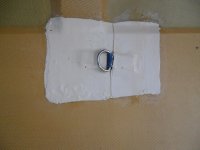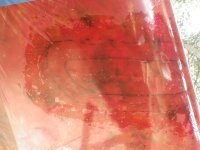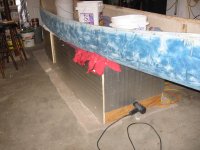G
Guest
Guest
Thinking about DougD’s trials and travails in re-railing the Rob Roy, and the fugly stem “repairs” someone attempted on the kevlar Explorer currently in his shop, got me pondering my past boatworking mistakes.
I’d like to qualify those as “early, self-taught mistakes”, but I’m still making new ones. Boatwork remains a learning process.
OK, using Hard as Nails construction adhesive on foam was plumb dumb as a stump, especially since, had I known, contact cement was probably one shelf over in the hardware store. At the time I didn’t know what I didn’t know.
In the spirit of learning process admission I’ll confess that the single horrible-est thing I ever did was to buy kevlar skid plate kits and install them. On my boats. And friend’s boats. Maybe a dozen boats total. Even though my latter attempts were well and durably installed, the excess of those kev felt kits was used for worse applications.
The “worse” was that I cut off the overlarge extra of the kevlar felt and used that fugly scrap crap along with the excess resin to repair hull cracks. On my boats. And on friend’s boats. I didn’t know what I didn’t know about epoxy resins and cloth and I am so sorry.
It’s too late for a boatworking 12 step program. Making amends in steps 8 and 9 would be a b*tch, even with the allowance of shop beers for grinder courage, and although it would keep me busy for some time I see no joy in chipping and grinding off dozens of those awful kevlar felt skid plates. So, so sorry.
I know y’all have screwed the pooch on builds and rebuilds, forcing aluminum gunwales on strippers, laboriously sanding away resin and cloth mistakes and experiments, rebuilding canoes bow-to-stern bass akwards, running out of peel ply when installing Dynel.
Oh, wait, that last one was me again. Dammit, I really need to order more peel ply.
I’d like to qualify those as “early, self-taught mistakes”, but I’m still making new ones. Boatwork remains a learning process.
OK, using Hard as Nails construction adhesive on foam was plumb dumb as a stump, especially since, had I known, contact cement was probably one shelf over in the hardware store. At the time I didn’t know what I didn’t know.
In the spirit of learning process admission I’ll confess that the single horrible-est thing I ever did was to buy kevlar skid plate kits and install them. On my boats. And friend’s boats. Maybe a dozen boats total. Even though my latter attempts were well and durably installed, the excess of those kev felt kits was used for worse applications.
The “worse” was that I cut off the overlarge extra of the kevlar felt and used that fugly scrap crap along with the excess resin to repair hull cracks. On my boats. And on friend’s boats. I didn’t know what I didn’t know about epoxy resins and cloth and I am so sorry.
It’s too late for a boatworking 12 step program. Making amends in steps 8 and 9 would be a b*tch, even with the allowance of shop beers for grinder courage, and although it would keep me busy for some time I see no joy in chipping and grinding off dozens of those awful kevlar felt skid plates. So, so sorry.
I know y’all have screwed the pooch on builds and rebuilds, forcing aluminum gunwales on strippers, laboriously sanding away resin and cloth mistakes and experiments, rebuilding canoes bow-to-stern bass akwards, running out of peel ply when installing Dynel.
Oh, wait, that last one was me again. Dammit, I really need to order more peel ply.




